2020 has been the year of adaptation for CPG brands managing sales spikes and increased omnichannel sales due to changing shopping habits during the pandemic. As a result, many suppliers are finding that Walmart Supply Plans are off from actual POS metrics.
At Harvest Group, we’ve received several questions about Walmart Supply Plans and the best way for suppliers to manage them when sales are ever-changing during this unique time. Below you will find a Q&A based on conversations we’ve had over the past few months.
First, why are Walmart Supply Plans off for many suppliers?
Supply Plan is always evolving based on shifts in the business. It is based on many factors but is driven by the POS forecast and recent weeks’ POS. During COVID, many brands saw unexpected POS increases that weren’t originally built into the forecast. If the forecast doesn’t update appropriately based on these POS changes, Supply Plan won’t capture the true need. It’s important to keep in mind that Supply Plan is a directional number and not a commitment from the retailer. Suppliers should always have a healthy level of safety stock (at least 8 weeks of supply) to mitigate shifts in their business and ordering patterns.
How can a supplier identify if their Supply Plan is off?
In order to track Supply Plan accuracy, you need to compare historical Supply Plan pulls to actual Order Quantity for historical weeks and calculate the variance. Supply Plan will likely never be 100% accurate, but suppliers can establish a historical variance to estimate future order quantities.
What actions can suppliers take if their Supply Plan is off?
It’s best to continue to focus on the core supply chain fundamentals. It’s important to have a strong emphasis on delivering on-time and in-full. Coupling this with a rigorous Forecast scrub at Corporate, DC, and Store level will help mitigate Supply Plan shifts.
How can suppliers address Supply Plan to have a successful holiday season and accurately forecast for 2021 sales?
Begin having holiday strategy discussions with your replenishment manager early. Understand the department level strategies and when those will be visible in Supply Plan. Ensure that the strategy in place is aggressive enough to capture the upcoming holiday demand and make recommendations at a granular item/store level to address any gaps in what is planned vs. what sales potential items have.
How can Harvest Group help?
Harvest Group has invested in technology that allows us to track Supply Plan accuracy over time. We can do this at an item level, which gives our supplier partners a variance they can apply to their Supply Plan numbers. Our technology investment also allows us to quickly identify and address forecast issues at the corporate, DC, and store level by item. Forecast accuracy and supply chain performance are key to a reliable Supply Plan.


